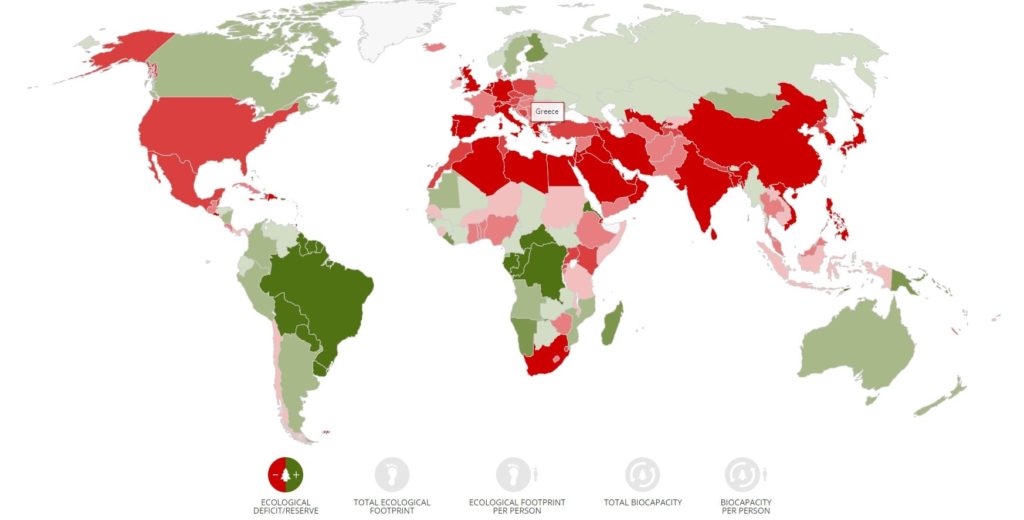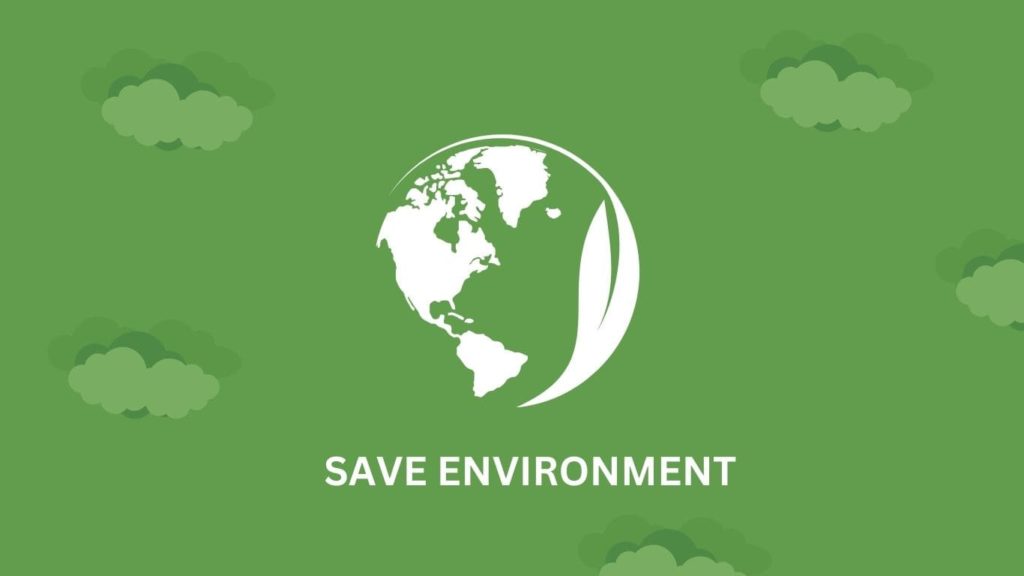
Technology affects the environment. Saving the environment is both a noble and a necessary cause. As humankind, we must realize the error of our ways and promise to do better. Luckily, we have modern technology to help us. And, if we plan on succeeding, we must take both forks in the road: build improved sustainable ecosystems while rectifying or mitigating the damage we’ve already done over time. And, while one person’s actions might be insignificant, if we team up as a society, the chances rise, and rapidly. With that acknowledged, let’s get into how technology can help save the environment.
Is Technology Important for the Safety of Our Environment?
It is an age-old debate whether technology is good for nature or not. Although there is compelling evidence for both sides, we have to take into account the fact that technology is not going anywhere. And since we have to develop from here, the only way forward should be something that is also beneficial for our environment.
A recent study by the Global Footprint Network shows that we are burning through natural resources like there is no tomorrow. In fact, we are facing an ecological deficit that, if left unaddressed, would spell devastation for our planet. This is where green technology comes into play.

Today, many administrations around the globe have started heeding the call for sustainability. As evident, the US alone signed a new legislation, reserving almost $1.2 trillion for the development of green technology. The Infrastructure Investment and Jobs Act, signed into law by President Joe Biden on November 15, 2021, would work to ensure investment and growth in the green tech industry.
How Technology Can Save the Environment

Technology saves the environment in a lot of ways including renewable energy technologies like solar and wind power reducing reliance on fossil fuels, thus cutting greenhouse gas emissions. Additionally, advancements in data collection and AI can help monitor environmental changes, optimize resource use, and develop sustainable solutions. All these contribute towards a healthier planet.
1. Energy saving
The United States’ electric power sector was responsible for close to 91.8% of the total coal consumption in the country in 2019. Obviously, we must do something to reduce the expenditure of this finite resource.
Smart homes
Smart home devices can be programmed and controlled remotely or independently, through artificial intelligence and necessary sensors. Additionally, we can interconnect them via IoT (Internet of Things). This is precisely what makes things such as automatic light dimming or turn-off or cutting power to house gadgets and appliances possible.
As an example, we can (or let AI) control blinds to keep a house warmer or colder, or control thermostats to keep a temperature at optimal levels. Additionally, smart homes can send notifications to the owner if sensors detect doors, windows, or even the fridge door is ajar. All of these are notorious for bleeding energy.
Green homes and buildings
Green buildings and homes are carefully engineered to harness and use the power of natural lighting. Also, there’s an influx of passive homes design with energy savings of up to 90% through internal insulation and carefully crafted external walls.
Moreover, roof and floor slabs retain heat in winter and keep it out during summer. Also, no energy escapes through doors or windows thanks to the double or triple-glazing and efficient ventilation systems. Finally, these homes use biomass boilers, hybrid heat pumps, and many other energy-saving measures technology made possible.
Transportation
In recent years, smart/electric vehicles are prominent. They’re significantly more energy-efficient in power delivery and have 0 carbon emissions. For example, Tesla Model 3 delivers 62% of the engine power to the car wheels while regular cars can do between 17% and 21%. Moreover, they run on rechargeable lithium-ion battery cells, which are capable of between 220 miles (350 km) and 310 miles (500 km) on one charge.
2. Conserving resources
Protecting precious resources is a way technology can help save the environment. These are 3 notable areas:
Water
Saving water at home is another technology-aided strategy. Showerhead water restrictors, water-efficient washing machines, and dishwashers, faucets that conserve water without a drop in pressure thanks to different aerators are some examples. Low-flow toilets reduce water expenditure to only 1.6 gallons (6 liters) per flush, and double-flush toilets allow you to switch between settings.
Finally, smart sprinkler systems can detect the weather, reduces the water bill, and reduce the communal water supply drain.
Wood
Moving away from paper use has had a massive effect. We use it less in education thanks to technology, for one, and we’re transitioning from printed materials to ebooks and audiobooks. Also, streaming services have eliminated CD, DVD, and (almost) BluRay use. Finally, we’re slowly pushing for sustainable wood plantation and trade to offset the negative impact of climate change and illegal deforestation.
Coal
Coal is still plentiful and cheap and instead of giving it up, experts are trying to reduce its consumption. To do that, they’re using technology-assisted techniques such as carbon capture and storage (CCS) and coal gasification. Similar improvements are made to conserve the use of natural gas and petroleum, and stop reliance on liquefied natural gas (LNG).
Another great example of technology slowing the consumption of coal is extracting coal-bed methane. While the coal is too deep to mine, through technology that drains all of the water, the methane can be extracted from the coal seam.
3. Energy generation
One of the most significant impacts of technology on the environment is renewable energy generation. Its primary goal is to find alternatives or improvements for non-renewable sources such as natural gas, petroleum, and coal. We already have a shift to the power of the sun through solar panels, which can even rotate to maximize exposure.
Less seen, but present nonetheless are wind turbines, which are often clustered into wind farms. Technology can also harness the energy of the tides of sea and ocean, and use water turbines to generate hydroelectric power from dams. Solar glass, e.g., transparent glass that absorbs solar energy, is yet to enter commercial space.
4. Waste elimination
Eliminating waste is yet another approach technology can take to help save the environment:
Food
Humans throw out roughly 1/3 of the world’s food and nearly 1/2 of the world’s fruits. Meanwhile, millions of homeless people are starting. Thankfully, technology is getting more adept at tracking the food from the farm to the table.
As such, it can eliminate waste through data collection and distribution. Besides people, who can report and share a surplus of food to the community, sensors are getting better at monitoring and reporting on expiration dates. Furthermore, advancements in biofuel digestion can utilize food that’s too far gone to create energy.
Landfills
Gadgets that can connect to electronics in various devices, computers, and even cars can diagnose problems and give provide detailed error codes. Not only does this prolong the lifespan, but also reduces the number of newly manufactured parts and those that need to be thrown out.
Similarly, home or industrial appliances or machines can use special tools to detect and notify when parts are near failure. Finally, highly refined recycling processes invent new uses for electronics, mechanics, plastics, glass, and other materials we throw carelessly. For example, plant-based, biodegradable plastic products.
5. Reducing pollution
One of the notable indicators technology can save the environment is pollution reduction. Did you know meat consumption leads to deforestation and significant carbon release? According to the Food and Agriculture Organization, livestock represents 14.5% of greenhouse gas emissions humans produce directly or indirectly. Animals also consume precious freshwater while industrial livestock operations contaminate local watercourses.
Luckily, meat substitutes, whose existence has the technology to thank, is a great alternative. Additionally, technology makes monitoring for harmful gasses possible through highly sensitive sensors and even drones. This includes greenhouse gasses (carbon monoxide, carbon dioxide, methane) and other hydrocarbon concentrations.
Top 5 Technologies that Will Save Our Planet
Technology can certainly play an important role in saving our planet. And it is not that the people are unaware. In fact, the modern consumer is even willing to spend more on a product if the company actively participates in green initiatives or sustainability. Thus, let us look at some of the technologies that can make our planet a better place. Also, there is a video that depicts how technology impacts our environment. Take a look:
1. Solar Glass
Solar glass is a revolutionary innovation that can help us save natural resources. It is a transparent glass panel that can be installed in a window pane and use the sunlight to generate electricity. According to PV Magazine, the University of Michigan, which is behind this innovation, claims that these solar glass panels can reduce our reliance on traditional electricity, curbing carbon emissions. The team is hopeful that the technology can help the US get almost 40% of its electricity through solar glass panels.
2. Aquaponics
Aquaponics is a sustainable farming method that involves combining fish tanks with plants. The waste produced by fish can act as fertilizer, which the planets would use to grow. In return, the plants can absorb the nitrogen from the water and give it back to the fish.
3. Carbon Capture and Storage (CCS)
Carbon capture and storage is an emerging tech that can separate CO2 from industrial emissions, helping reduce global warming and greenhouse effects. The very first carbon capture facility is already underway in Switzerland, and countries like the US and Canada are working on their plants.
4. LED Lights
LED lights are nothing new for the world, they have been in use for more than a decade. However, very soon they will have succeeded in replacing almost every other traditional lighting source. In doing so, these bulbs would reduce energy consumption by 40%, saving about $26 billion in electricity bills.
5. Kinetic Pavements
Lastly, there are kinetic pavements in development. The idea behind these pavements is to use the kinetic energy produced when walking to power traffic lights, lamp posts, streetlights, and even communal charging ports.
Below, we have created a table of technologies that can aid the environment:
| Technology | Description | How It Can Help |
|---|---|---|
| Solar Glass | A transparent solar panel that can be installed in window panes | It can reduce our reliance on traditional electricity, reducing carbon emissions from power plants. |
| LED Lights | Energy-efficient light bulbs that last a long time | Reduces energy consumption, waste, and carbon emission |
| Aquaponics | A sustainable method of farming | Reduces reliance on soil for farming |
| CCS | It can capture CO2 gases present in industrial emission | It will reduce global warming and greenhouse gas effects |
| Kinetic Pavements | A pavement that can store kinetic energy | It can harness the stored energy to power electrical products |